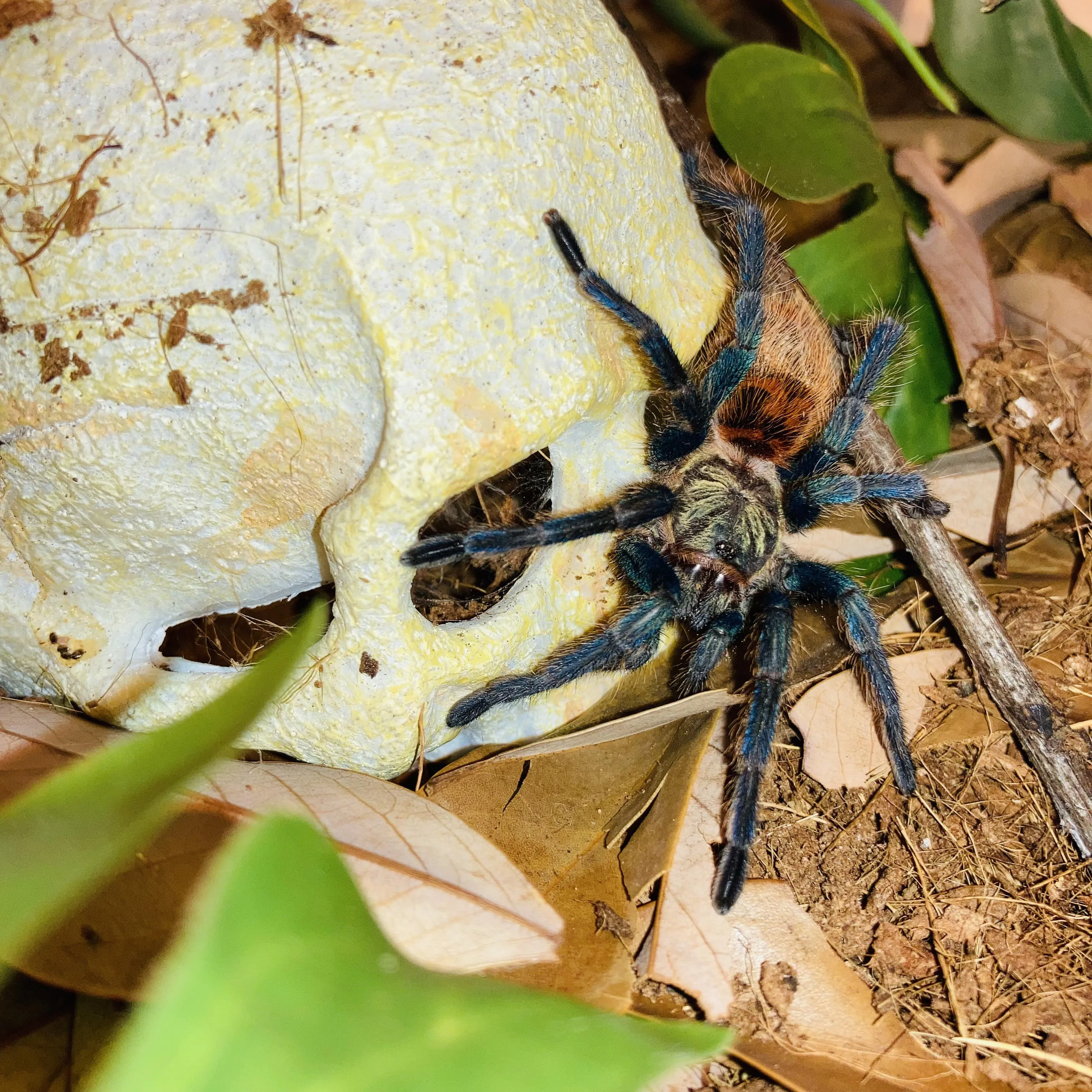Why Buy a GBB Tarantula
The GBB Tarantula, or Greenbottle Blue Tarantula (Chromatopelma cyaneopubescens), is a stunning and captivating species that has become increasingly popular among tarantula enthusiasts. Their vibrant coloration, relatively docile temperament, and manageable care requirements make them an attractive choice for both novice and experienced keepers. If you’re considering bringing one of these beautiful creatures into your home, this ultimate guide will provide you with all the essential information you need to make an informed decision and ensure your new pet thrives. Purchasing a GBB tarantula can be a rewarding experience, offering a unique opportunity to observe and learn about these fascinating arachnids. They are a low-maintenance pet, perfect for people with a busy lifestyle, requiring less attention than many other pets while offering the rewarding experience of owning a beautiful and exotic creature.
What is a GBB Tarantula
The GBB Tarantula is native to the dry scrublands of Venezuela and is known for its striking appearance. The adults showcase a metallic blue hue on their legs, a vibrant orange abdomen, and a greenish-blue carapace. This combination of colors makes them one of the most visually appealing tarantula species. They are a medium-sized tarantula, with females typically reaching a leg span of up to 6 inches. They are known for their webbing abilities, often creating elaborate webs within their enclosures. This species is semi-arboreal, meaning they will spend time both on the ground and climbing within their habitat. Their vibrant colors and interesting behavior make them an excellent choice for those seeking a visually stunning and engaging pet. It is important to understand their natural habitat so that they can thrive in captivity.
Where to Buy a GBB Tarantula
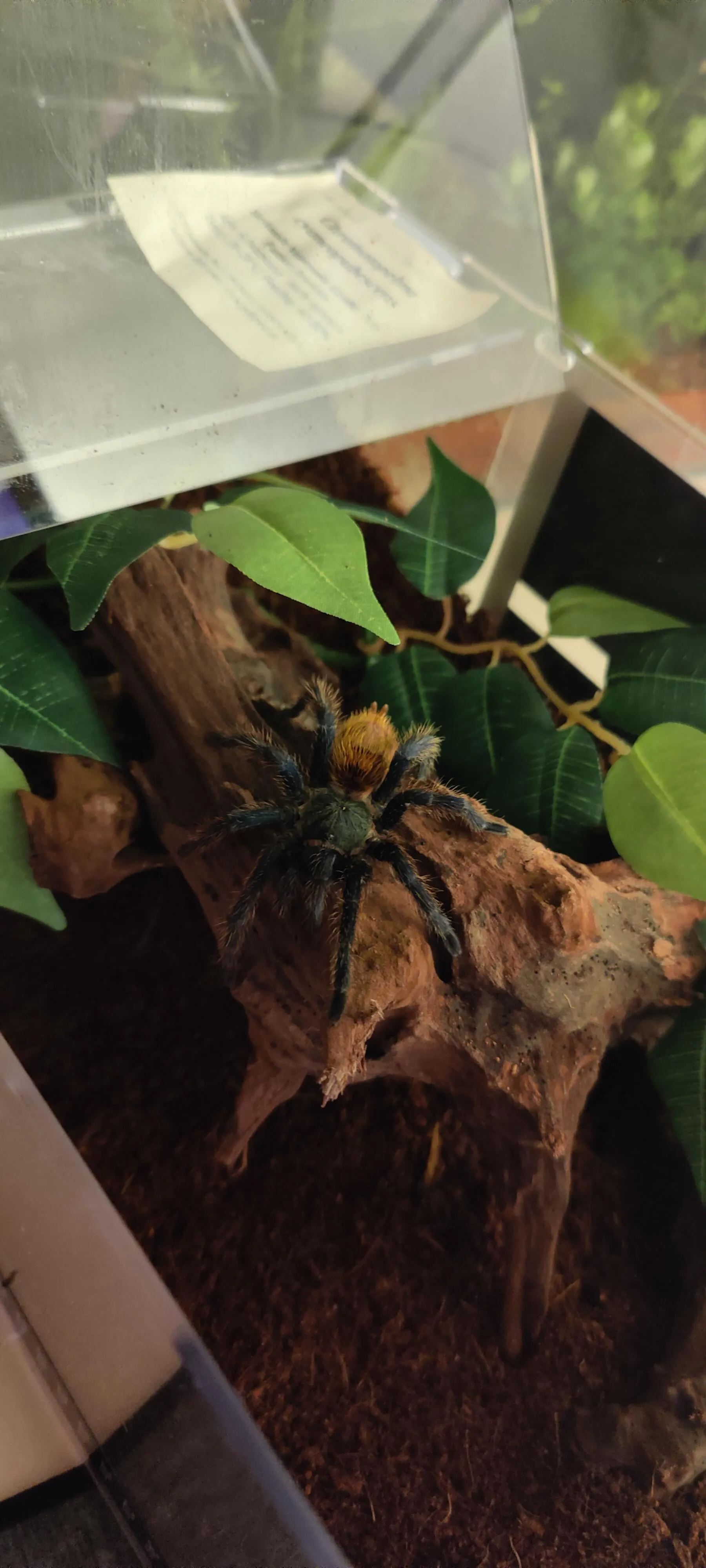
Finding a GBB tarantula for sale involves careful consideration to ensure you acquire a healthy specimen from a reputable source. Several avenues exist for purchasing a GBB tarantula, each with its own set of advantages and potential drawbacks. This section will guide you through the process of finding a GBB tarantula for sale, from identifying reliable breeders to choosing between online and local options. Understanding the different channels available will help you make an informed decision and secure a healthy and well-cared-for tarantula. It’s vital to prioritize the welfare of the animal by choosing a seller with a strong reputation and ethical practices.
Reputable Breeders and Sellers
The best place to buy a GBB tarantula is from a reputable breeder. These breeders specialize in tarantulas and typically prioritize the health and well-being of their animals. They usually have a strong understanding of the species’ needs and can provide valuable care information. Look for breeders with positive reviews, who are transparent about their breeding practices, and who offer health guarantees. Many breeders also maintain a website or social media presence where you can view their available tarantulas and ask questions. Buying from a reputable breeder minimizes the risk of acquiring a tarantula with health problems or poor genetics. It is crucial to research breeders thoroughly before making a purchase.
Online vs Local Pet Stores
You can also find GBB tarantulas for sale online or at local pet stores. Online retailers can offer a wider selection and may provide more competitive pricing. However, it is essential to ensure the seller has a good reputation and offers guarantees for the health and safe delivery of the tarantula. Be sure to check reviews and ask questions about their shipping practices. Local pet stores can provide the advantage of allowing you to view the tarantula before purchase and ask questions in person. However, the selection may be more limited, and the staff may not always have extensive knowledge about tarantula care. Always assess the tarantula’s health and the store’s reputation before making a purchase. Compare the options available in terms of health guarantees, shipping, and customer service.
How to Choose a Healthy GBB Tarantula
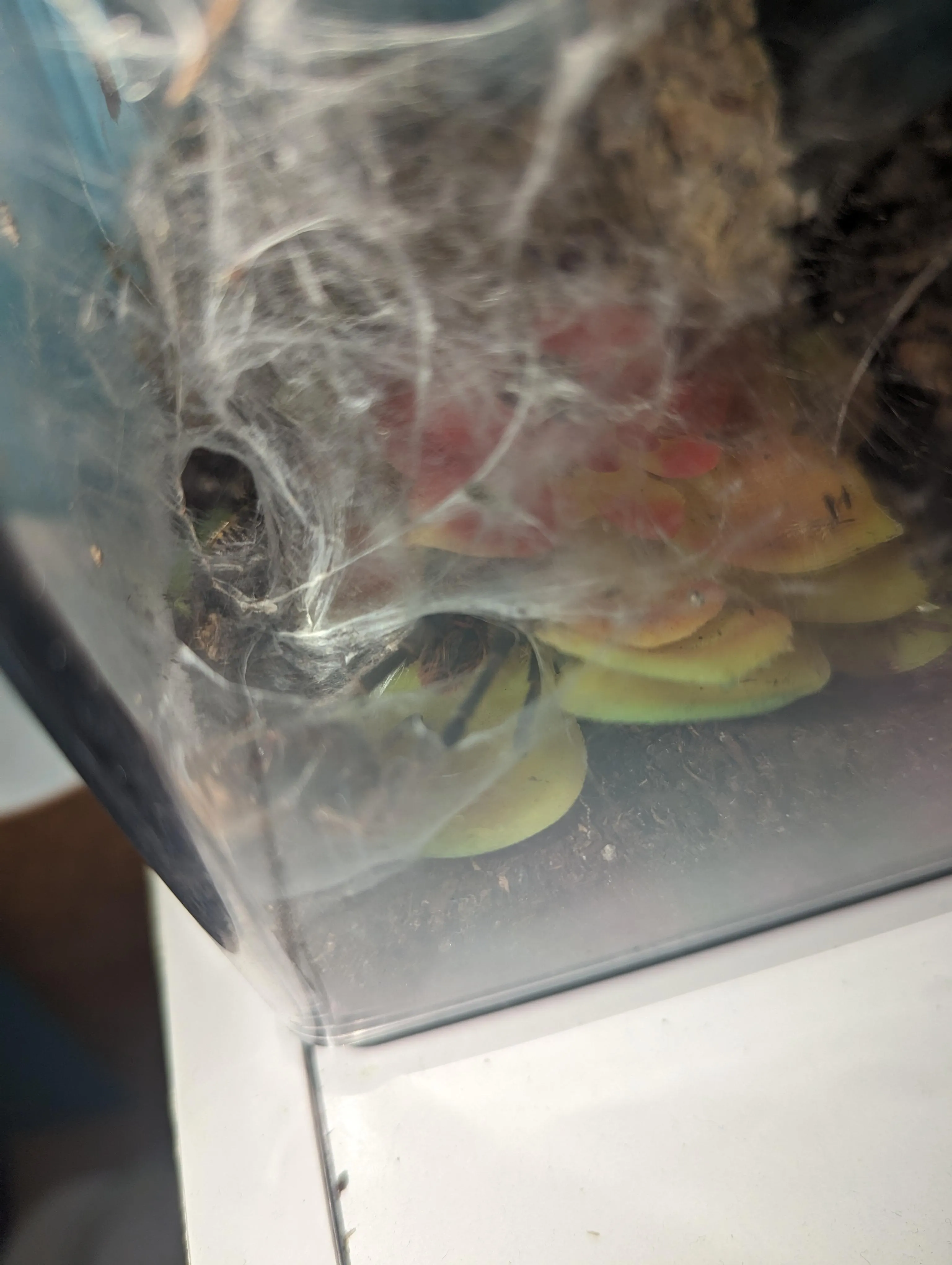
When buying a GBB tarantula, it is essential to choose a healthy specimen. This will ensure your tarantula lives a long and fulfilling life. Thoroughly examining the tarantula and asking the seller about its history are essential steps. This part will provide guidance on what to look for and what to avoid when selecting a GBB tarantula for sale. Prioritizing the health of your new pet is crucial for a positive ownership experience. A healthy tarantula will be active, exhibit normal behaviors, and be free from signs of illness or injury.
Appearance and Behavior
A healthy GBB tarantula should have a plump abdomen, indicating it is well-fed and hydrated. Its legs should be intact, with no missing limbs or signs of injury. Observe its behavior; the tarantula should be alert and responsive to its environment, not lethargic or unresponsive. While GBBs are generally docile, they may exhibit defensive postures if they feel threatened. Familiarize yourself with these postures to understand your tarantula’s mood. A healthy tarantula will also have vibrant colors, which are a key characteristic of this species. Watch for signs of distress, such as curling legs or loss of appetite, as these could indicate health issues.
Signs of a Healthy Tarantula
Look for a tarantula that walks and moves normally, without any wobbling or difficulty. Its fangs should be intact and healthy. The pedipalps (small appendages near the mouth) should be clean and functional. Check the enclosure for any signs of parasites or mites, as these can negatively impact the tarantula’s health. If possible, ask the seller about the tarantula’s feeding and molting history. A healthy tarantula will have a regular feeding schedule and have molted recently. Any unusual behaviors, such as excessive webbing or hiding, could indicate a problem. A healthy tarantula will be a good eater, accepting prey readily. Be sure to inquire about its diet and feeding habits.
Things to Avoid When Buying
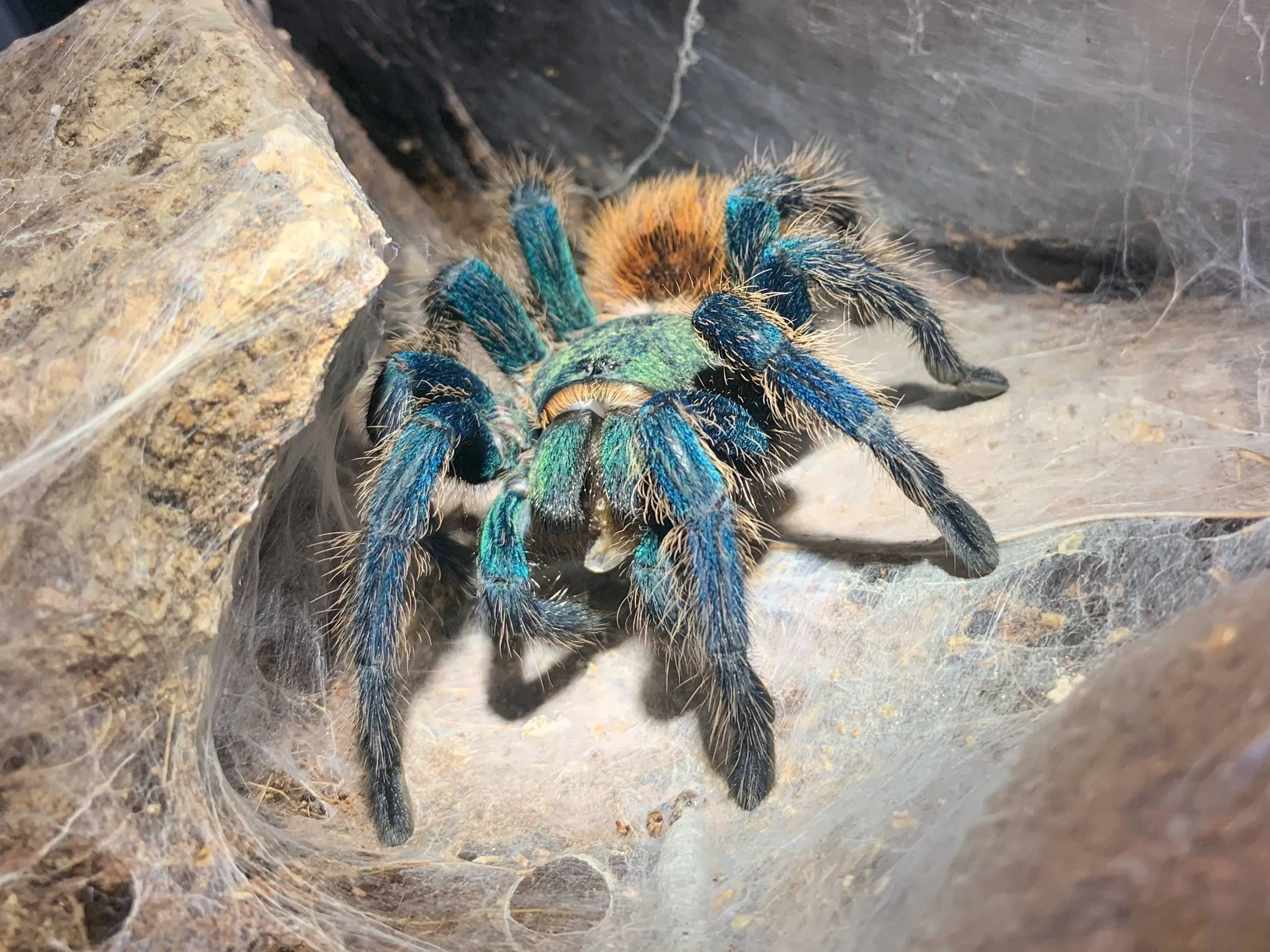
Avoid tarantulas that appear thin or emaciated, as this may indicate a lack of proper care or a health issue. Steer clear of specimens with missing limbs, as this could indicate a previous injury or a problem with molting. Do not purchase a tarantula that is sluggish or unresponsive to stimuli. Also, avoid buying a tarantula that is kept in a dirty or overcrowded enclosure, as this may indicate the seller does not provide proper care. Be cautious of sellers who cannot provide information about the tarantula’s history or care requirements. Be sure to thoroughly examine the tarantula’s environment, and don’t hesitate to ask questions about its care and health. Trust your instincts if something doesn’t seem right. Prioritize the well-being of the tarantula over the price or convenience of the purchase.
GBB Tarantula Habitat Setup
Setting up the correct habitat is crucial for the well-being of your GBB tarantula. A proper enclosure that provides the necessary environmental conditions will ensure your tarantula thrives. This section will cover all the essential aspects of setting up a suitable habitat for your GBB tarantula, from choosing the right enclosure to maintaining the appropriate temperature and humidity levels. Proper habitat setup is essential for a healthy and happy tarantula. A well-designed habitat mimics the tarantula’s natural environment, which helps reduce stress, promote natural behaviors, and support overall health. Paying attention to these details will greatly improve the quality of your pet’s life and enhance your enjoyment of owning a GBB.
Enclosure Size and Type
For a GBB tarantula, a suitable enclosure should be at least 10 gallons for juveniles and 20 gallons or larger for adults. The enclosure should be tall rather than wide, as GBBs are semi-arboreal and enjoy climbing. Glass terrariums with secure lids are a good choice, providing clear visibility and proper ventilation. Make sure the lid is secure to prevent escapes. Avoid enclosures with sharp edges or features that could harm the tarantula. A well-ventilated enclosure prevents the build-up of humidity and harmful gases. The size of the enclosure will depend on the size of the spider. A larger enclosure offers space for the tarantula to explore and web, which will keep the spider entertained.
Substrate and Decorations
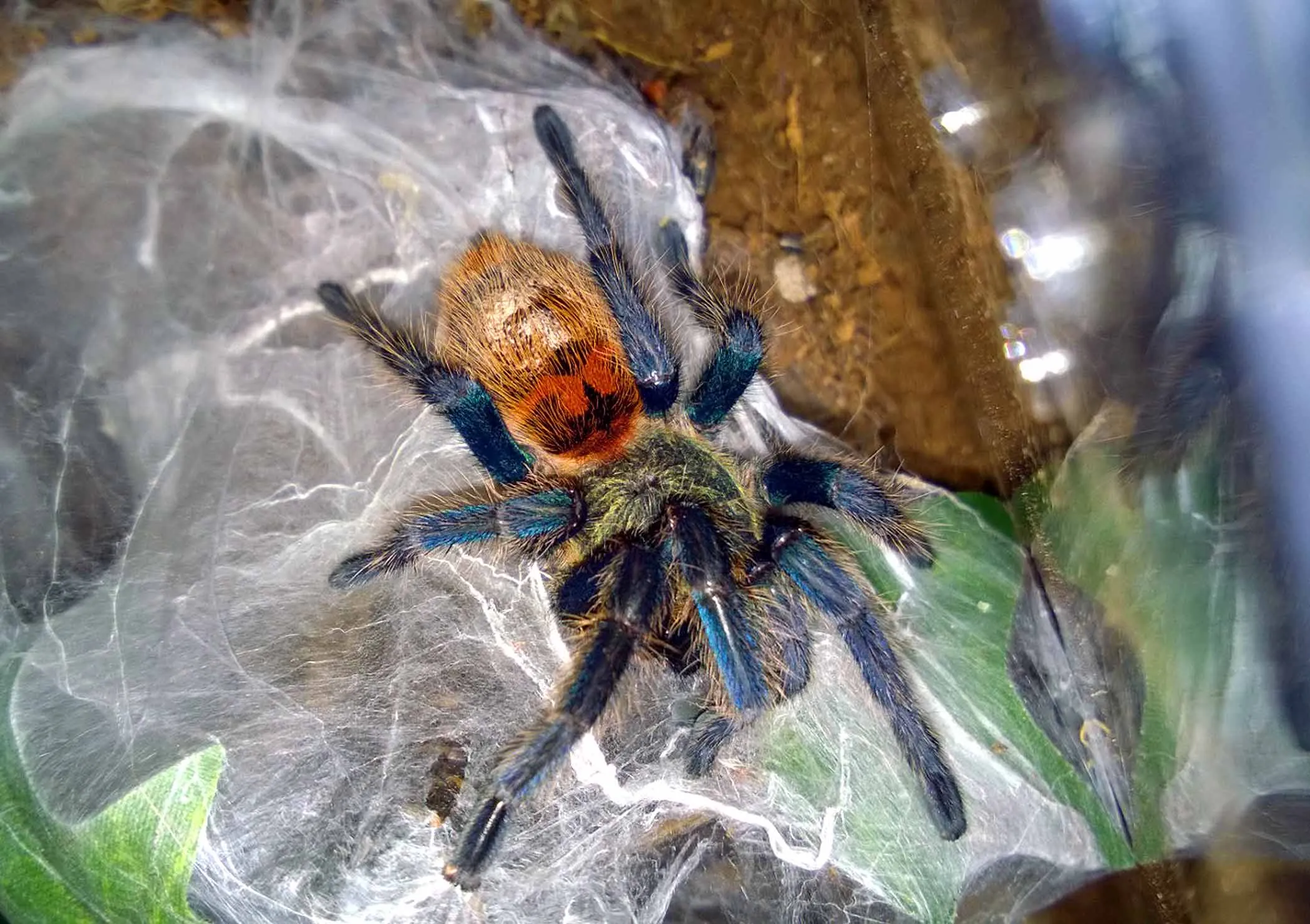
The substrate should be a minimum of 3-4 inches deep to allow the tarantula to burrow if it chooses. A mix of coco fiber, peat moss, and vermiculite works well, retaining moisture while allowing for good drainage. Avoid using soil from your garden, as it could contain harmful chemicals or parasites. Provide plenty of decorations, such as cork bark, artificial plants, and sturdy branches, to create hiding spots and climbing opportunities. These additions will help mimic the tarantula’s natural environment and make it feel more secure. Ensure any decorations are securely placed and do not pose a risk of injury. The substrate also helps to regulate humidity levels. The tarantula will use the decorations to make webs, which allows for more enrichment.
Temperature and Humidity
GBB tarantulas thrive in temperatures between 75-85°F (24-29°C). Use a thermometer to monitor the temperature inside the enclosure. Maintain a humidity level of around 60-70%. This can be achieved by misting the enclosure with water a few times a week and ensuring the substrate remains slightly moist. Avoid over-misting, as this can lead to mold growth. Provide a shallow water dish for the tarantula to drink from. Regular monitoring of temperature and humidity is essential to maintaining a healthy environment for your GBB. Too much humidity can be dangerous for the spider. Too little humidity and the spider may not be able to molt.
Feeding Your GBB Tarantula
Feeding is a critical aspect of caring for your GBB tarantula. A proper diet will ensure your tarantula receives the necessary nutrients to thrive. This section will cover what to feed your GBB, how often to feed it, and how to provide water. Understanding your tarantula’s dietary needs is vital for its health and longevity. Providing the correct food and frequency will allow your tarantula to grow, molt, and live a long life. An underfed tarantula will be weak, while overfeeding can cause health issues. Feeding properly is one of the most important parts of tarantula care.
What to Feed a GBB Tarantula
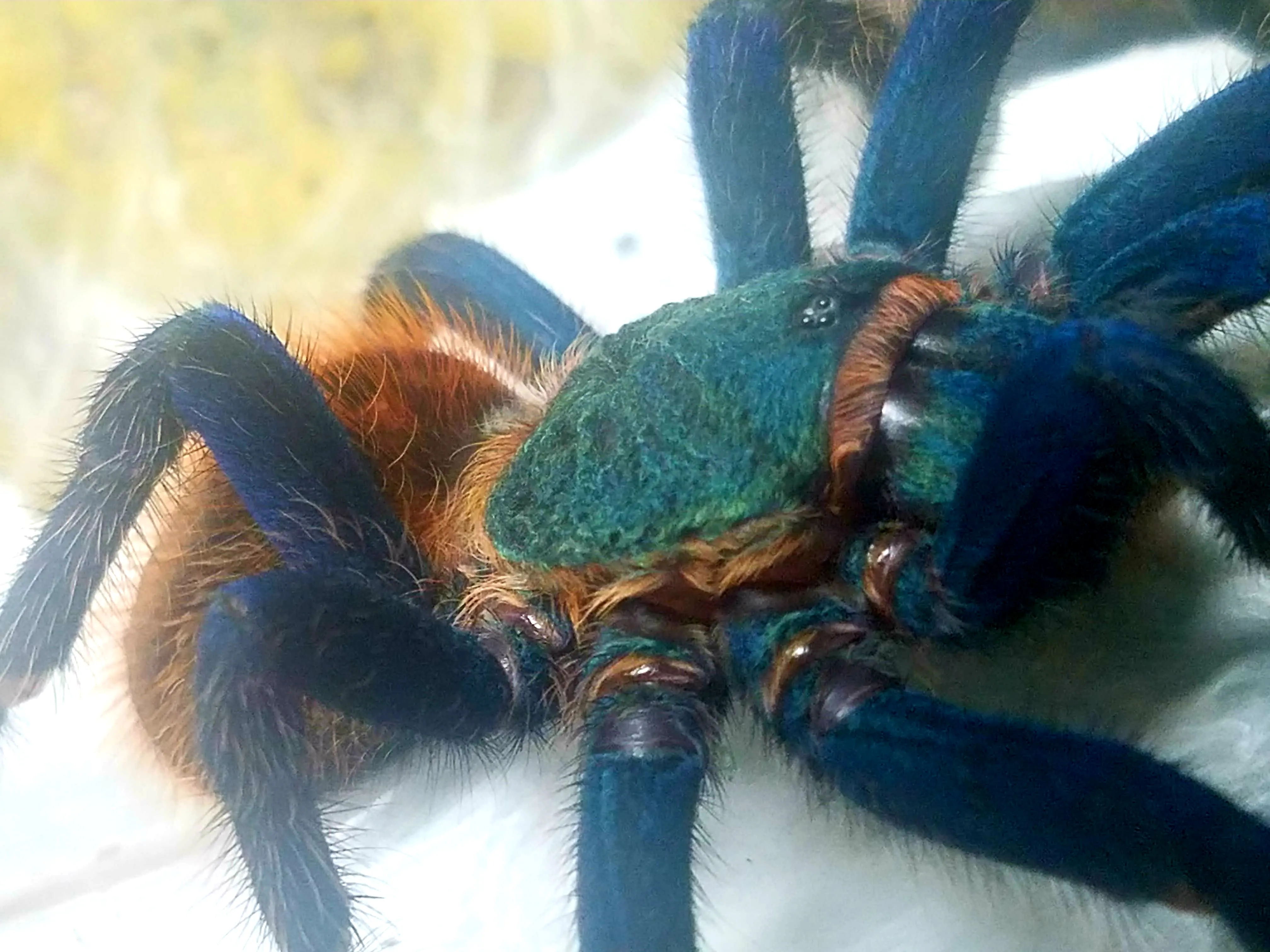
The primary food source for GBB tarantulas is insects. Crickets, dubia roaches, and mealworms are excellent choices. You can also offer the occasional super worm or a pre-killed pinky mouse (for adult tarantulas only, and sparingly). Ensure that the insects you feed your tarantula are gut-loaded with nutritious food such as vegetables and fruits before feeding. This will provide additional vitamins and minerals to your tarantula. Avoid feeding wild-caught insects, as they could carry parasites or pesticides. Always remove uneaten food within 24 hours to prevent mold growth. Varying the diet can also ensure your tarantula receives a variety of nutrients.
Feeding Frequency
Juvenile GBBs should be fed 2-3 times per week, while adults can be fed once a week or even less frequently. Adjust the feeding schedule based on the tarantula’s appetite and activity level. If your tarantula refuses to eat, it might be preparing to molt. Do not be alarmed if the tarantula goes without food for several weeks leading up to a molt. Always offer a water dish filled with fresh, clean water. Remove any uneaten food within 24 hours to prevent the growth of mold and bacteria. The frequency will also depend on the size of the tarantula. A larger tarantula will be able to eat a larger quantity of insects.
Water and Hydration
Always provide a shallow water dish filled with fresh, clean water. The water should be accessible and easily reachable. Refill the water dish every 1-2 days and clean it regularly to prevent the build-up of bacteria. In addition to a water dish, you can mist the enclosure lightly every few days to maintain proper humidity levels. This will also help the tarantula stay hydrated. The water dish is essential for hydration and also helps to regulate humidity. Make sure the water dish is appropriately sized for your tarantula, so it cannot drown.
GBB Tarantula Care and Maintenance
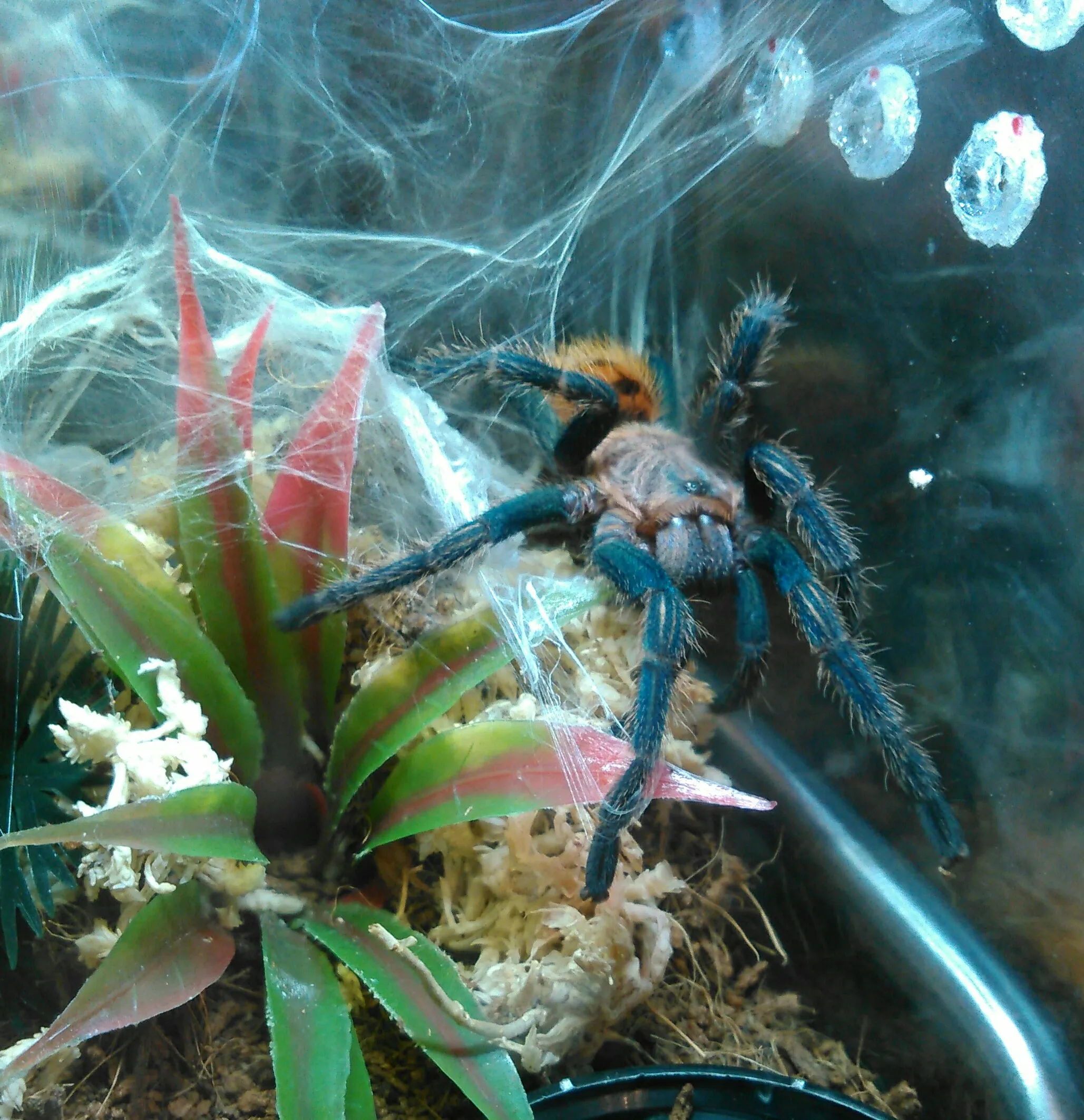
Caring for your GBB tarantula involves more than just feeding and watering. Regular maintenance is critical to maintaining a healthy and comfortable environment for your pet. This section will cover handling, health considerations, and the molting process. Regular care and maintenance contribute significantly to the health and well-being of your tarantula. A healthy environment, combined with careful handling, will keep your pet happy for years to come. This section will give you all the information needed to ensure your tarantula thrives.
Handling and Interaction
GBB tarantulas are generally not recommended for frequent handling. While they have a relatively docile temperament, they can be skittish and unpredictable. Excessive handling can stress them. If you must handle your tarantula (for enclosure cleaning, for example), do so with extreme caution. Gently coax the tarantula into a container, and avoid sudden movements. Always supervise children when they are near the tarantula’s enclosure. When handling, it is best to do so on a soft surface, like a bed, to minimize the risk of injury if the tarantula falls. Handle with extreme caution, as a fall can cause injury to the spider. If you are new to tarantula keeping, it is best to avoid handling completely.
Health and Common Issues
Monitor your GBB tarantula for signs of illness or distress. Common health issues include mites, fungal infections, and injuries. Mites can be identified as small, moving dots on the tarantula’s body. Fungal infections can be recognized by discoloration or lesions. If you suspect your tarantula is ill, consult with a veterinarian experienced with exotic animals. Provide a clean and stress-free environment to minimize health risks. Regular cleaning of the enclosure and the use of a proper substrate can prevent many common issues. A healthy tarantula will have a healthy appetite and be active. If your tarantula is inactive, it might be sick.
Molting and Growth
Molting is a natural process where tarantulas shed their exoskeletons to grow. During molting, your tarantula will typically stop eating and may become reclusive. The tarantula will often flip onto its back during the molting process. Do not disturb the tarantula during molting. Once the molt is complete, the tarantula will be soft and vulnerable. Allow the new exoskeleton to harden before offering food. The frequency of molting depends on the tarantula’s age and growth rate. A juvenile will molt more frequently. Ensure the humidity is correct during the molting process, as this can prevent issues.
Benefits of Owning a GBB Tarantula
Owning a GBB tarantula can be a rewarding experience for several reasons. These spiders offer a unique opportunity to observe fascinating behavior and learn about the natural world. Their relatively low-maintenance care requirements make them ideal for those with busy lifestyles. This section will cover the benefits of owning a GBB tarantula and why they make an exciting and engaging pet. Owning a GBB can be a very rewarding experience. The beauty of this species is hard to deny, and its interesting habits and behaviors will provide hours of enjoyment. The manageable care requirements are perfect for anyone, including those with little experience.
GBB Tarantula Cost and Lifespan
The cost of a GBB tarantula can vary depending on its size, age, and the seller. Generally, you can expect to pay between $50 and $150 for a juvenile or subadult. The lifespan of a GBB tarantula is approximately 10-15 years for females and significantly shorter for males. Be sure to factor in the ongoing costs of care, including food, substrate, and any necessary equipment. The GBB is a long-term commitment. Taking into account the cost and lifespan is very important before purchasing a GBB tarantula. Purchasing a GBB is a long-term commitment, and it’s important to understand the financial and time investments required for their care.
Conclusion
The GBB tarantula is a beautiful and captivating species that can make a wonderful pet for the right owner. By following the guidance in this ultimate guide, you can ensure your new tarantula thrives and that you enjoy years of fascinating observation. Remember to choose a healthy specimen from a reputable source, provide a suitable habitat, and maintain proper care and maintenance. Owning a GBB tarantula is a rewarding experience that offers a unique window into the world of arachnids. With proper care and understanding, your GBB tarantula can become a cherished and engaging companion. Enjoy the journey of owning your GBB, and remember that responsible pet ownership is key to the health and happiness of your new pet.
